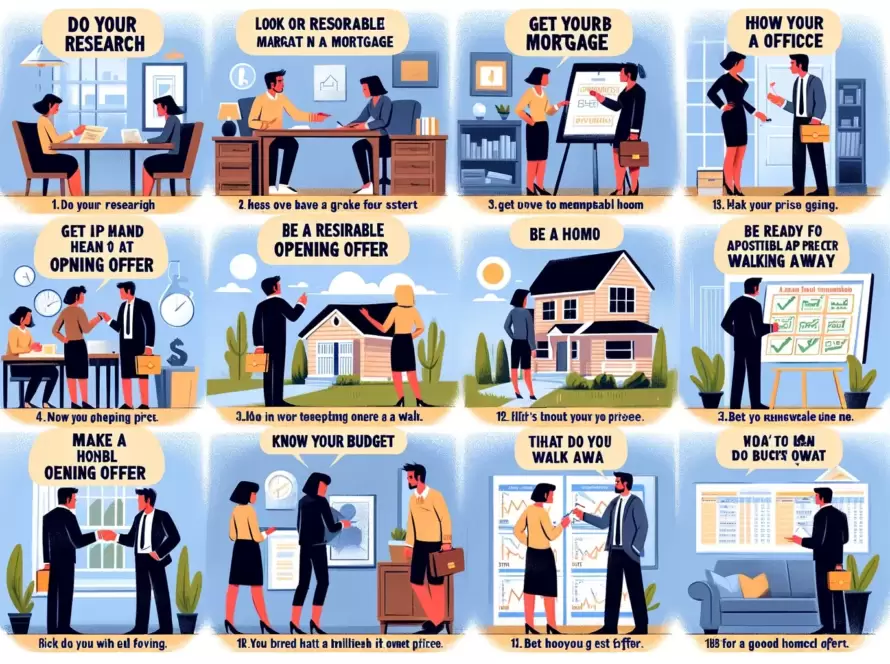
Table of Contents
- 1. Minimalist Elegance: Less is More
- 2. Bohemian Rhapsody: Eclectic and Free-Spirited
- 3. Scandinavian Simplicity: Functionality Meets Aesthetics
- 4. Industrial Chic: Raw and Refined
- 5. Mid-Century Modern: Timeless Appeal
- 6. Japandi: Harmony and Tranquility
- 7. Farmhouse Charm: Cozy and Inviting
- 8. Art Deco Glamour: Bold and Luxurious
- 9. Coastal Breeze: Fresh and Relaxing
- Conclusion: Finding Your Style
In the dynamic world of interior design, trends evolve swiftly, influencing the way we adorn our living spaces. As we move through 2024, several styles have emerged as frontrunners in the design community. These styles not only offer aesthetic appeal but also bring a unique blend of functionality and comfort. Let’s delve into the hottest interior design styles that are captivating homeowners and designers alike.
1. Minimalist Elegance: Less is More
Minimalism has been a cornerstone of interior design for years, and its appeal continues to grow. The essence of minimalist design lies in simplicity, clean lines, and a monochromatic palette. This style strips away the unnecessary, leaving only what is essential.
A minimalist space feels open, airy, and clutter-free. This is achieved by using furniture with sleek lines, neutral colors, and subtle textures. The focus is on quality over quantity, ensuring that each piece of furniture and decor serves a purpose. To prevent the space from feeling too stark, designers often incorporate natural elements like wood and stone, adding warmth and texture to the environment.
2. Bohemian Rhapsody: Eclectic and Free-Spirited
The Bohemian style is all about creativity and personal expression. It embraces an eclectic mix of patterns, colors, and textures, resulting in a space that feels both vibrant and relaxed. This style is perfect for those who love to travel and collect unique pieces from different cultures.
To achieve a Bohemian look, layer various textiles such as rugs, throws, and cushions in rich, warm hues. Incorporate vintage furniture and decor items, and don’t shy away from mixing and matching different styles. Plants also play a crucial role in Bohemian interiors, adding a touch of nature and enhancing the overall organic feel.
3. Scandinavian Simplicity: Functionality Meets Aesthetics
Scandinavian design continues to be a favorite due to its emphasis on functionality and simplicity. This style is characterized by its use of light, neutral colors, natural materials, and minimalist decor. The goal is to create a space that is both beautiful and practical.
Light plays a significant role in Scandinavian interiors, with large windows allowing natural light to flood in. Furniture is typically made from natural materials like wood, leather, and wool, contributing to a cozy and inviting atmosphere. The overall look is clean and uncluttered, with a focus on high-quality craftsmanship.
4. Industrial Chic: Raw and Refined
Industrial design draws inspiration from old factories and industrial spaces, making use of raw materials and exposed structural elements. This style is perfect for loft apartments and urban homes, offering a unique blend of ruggedness and sophistication.
To achieve an industrial look, incorporate materials like brick, concrete, and metal into your design. Exposed beams, ductwork, and pipes add to the raw aesthetic, while polished concrete floors and reclaimed wood furniture provide a refined touch. The color palette is typically neutral, with shades of gray, black, and white dominating the scene.
5. Mid-Century Modern: Timeless Appeal
Mid-century modern design is making a strong comeback, celebrated for its timeless appeal and functional beauty. This style, which originated in the mid-20th century, is characterized by clean lines, organic forms, and minimal ornamentation.
Furniture pieces are often made from teak, rosewood, and walnut, featuring tapered legs and sleek profiles. The color palette includes both bold and subdued tones, allowing for a mix of statement pieces and neutral backdrops. Mid-century modern design is perfect for those who appreciate the blend of vintage charm and contemporary comfort.


6. Japandi: Harmony and Tranquility
Japandi is a fusion of Japanese and Scandinavian design principles, creating a space that exudes harmony and tranquility. This style emphasizes simplicity, functionality, and a deep connection to nature.
To create a Japandi-inspired interior, use a muted color palette with earthy tones and natural materials like wood, bamboo, and stone. Furniture should be minimalist, with clean lines and a low profile. The focus is on creating a serene and uncluttered environment, where every element has a purpose.
7. Farmhouse Charm: Cozy and Inviting
Farmhouse style has evolved from its rustic roots to include more refined elements, resulting in a cozy yet sophisticated aesthetic. This style is characterized by its use of natural materials, vintage decor, and a neutral color palette.
To achieve a farmhouse look, incorporate reclaimed wood furniture, shiplap walls, and distressed finishes. Soft textiles like linen and cotton add warmth and comfort, while vintage accessories and decor items lend a sense of history and charm. The overall vibe is relaxed and welcoming, making it perfect for family homes.
8. Art Deco Glamour: Bold and Luxurious
Art Deco is experiencing a resurgence, bringing its signature glamour and sophistication back into contemporary interiors. This style, which originated in the 1920s, is characterized by bold geometric patterns, rich colors, and luxurious materials.
To create an Art Deco-inspired space, use materials like marble, brass, and lacquer. Furniture should have clean, streamlined shapes with a touch of opulence. Rich colors like emerald green, navy blue, and gold can be used to make a statement, while intricate patterns and bold artwork add a sense of drama and elegance.
9. Coastal Breeze: Fresh and Relaxing
Coastal design is perfect for those who love the beach and want to bring a bit of that relaxed, breezy vibe into their home. This style is characterized by its use of light, airy colors, natural materials, and nautical elements.
To achieve a coastal look, use a color palette inspired by the sea, such as soft blues, whites, and sandy beiges. Incorporate natural materials like wicker, rattan, and driftwood. Nautical decor items like rope accents, seashells, and marine-themed artwork add to the beachy feel. The goal is to create a space that feels fresh, relaxing, and effortlessly stylish.
Conclusion: Finding Your Style
With so many exciting interior design styles to choose from, it can be challenging to decide which one best suits your personal taste and lifestyle. Whether you prefer the minimalist elegance of Scandinavian design, the eclectic charm of Bohemian style, or the timeless appeal of mid-century modern, each trend offers unique ways to transform your living space.
Ultimately, the best interior design style is one that resonates with you and makes you feel at home. Don’t be afraid to mix and match elements from different styles to create a space that reflects your individuality. After all, the most important aspect of interior design is creating a home that you love.



